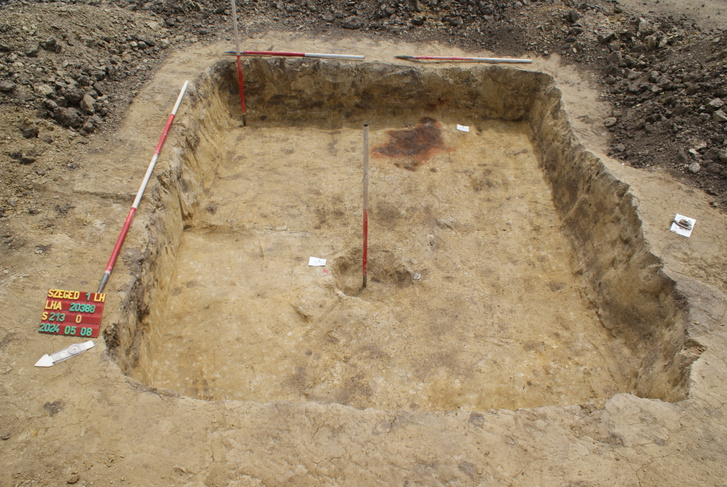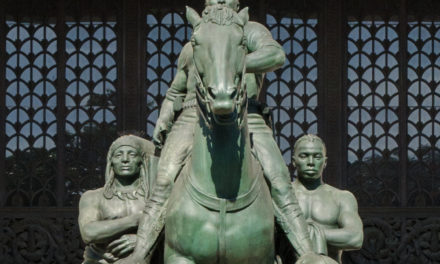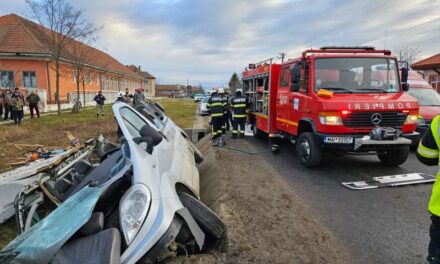Either we will become world famous because of BYD, or because of Attila's grave - Szeged is doing well either way.
Attila, the king of the Huns, is still very popular in the Hungarian-speaking region, while in Western Europe he is a symbol of evil and barbarism. The archaeologists of the Móra Ferenc Museum in Szeged regularly receive reports about the whereabouts of the gold coffin of the former Hun leader. According to some assumptions, such a location is the area of the Chinese e-car factory being built in Szeged. Index visited the excavations in the BYD area to see if the princely find has really been found.
"One thing is possible: We will find Attila's grave here," joked László Botka to BYD's Chinese investors, when they worriedly "asked him for the fiftieth time" whether a valuable archaeological find is expected to emerge in the 300-hectare area designated for the factory. The mayor of Szeged spoke about this at a public forum, where he revealed details of the negotiations between the e-car factory and the city. Chinese investors were "extremely sensitive" to archaeological excavations, fearing that a major discovery would completely upset the factory's construction schedule.
Either we will be world famous because of BYD, or because of Attila's grave
– joked László Botka at the beginning of the year, referring to the fact that Szeged is doing well anyway.
BYD and the precious golden casket
László Botka's statement is not unfounded, because a branch of the Tisza once flowed not far from the BYD area, which was cut off during the 19th century river regulation. The Maty-ér National Kayak-Canoe and Rowing Olympic Center was later created from this section of the river.
Based on written sources, historians locate the capital of the former Hun Empire and the location of Attila's grave in the wider area of Szeged.
If the legend of the Hun king's burial is true—the diverted river, the triple coffin, and the slain servants—there could be few better places than the future site of BYD. Index visited the site of the archaeological excavations in the northern area of Szeged to find out whether the archaeologists have already found the tomb of the famous and feared ruler.
The Szeged municipality will hand over the entire 300 hectares to BYD by the end of 2024, but before that, ammunition clearance and archaeological excavations must be carried out in the area next to the M43 highway. The work is proceeding at breakneck speed, as the management of the Chinese e-car factory promised that the first vehicles in Szeged will roll off the production line by the end of 2025.
We did not uncover Attila's grave, but traces of a loosely structured settlement were excavated. Late medieval and early modern corral marks were found, and some settlement phenomena from the Avar period were also found in the area
- said archaeologist Andrea Horváth at the scene. According to the head of the Móra Ferenc Museum's archeology department, next to the BYD, in the specially protected archaeological site in Öthalmi - where the State Defense Authority barracks was in the 1950s, and later the base and shooting range of the occupying Soviet troops - artifacts from the occupation may be found. In 1950, a salvage excavation was carried out here to uncover the graves of the occupying nationals, the exact location of which is still unknown due to the lack of photographs and records.
For us, the real sensation would be the identification of this cemetery and the discovery of the still existing burials
Andrea Horváth added.
Dozens of tips from self-proclaimed archaeologists
"We are regularly contacted by people who claim that they know for sure where Attila's three coffins - gold, silver and iron - are"
- explained archaeologist Sándor Varga.
Even Ferenc Móra was satisfied with the activities of the self-proclaimed archaeologists, who assured him that they knew where to look for the remains of the great ruler and the silver and gold coffin.
The renowned writer from Szeged, who was the city's museum director from 1917, also dedicated an article to the topic entitled "Accounting with Attila," noted the head of the department. Ottó Trogmayer, the justly famous former director of the Móra Ferenc Museum, regularly collected such "announcements".
According to the archaeologists, no specifically Hun graves have yet been discovered, only cemeteries from the Hun era have been excavated. When the eastern conquerors rode into the Carpathian basin, they exercised political power over the peoples around them, such as Sarmatians and Germans.
In our country, we know of rich finds that were probably connected to the funerals and burnt offerings of the Hun political elite. The most famous is the Nagyszészós treasure preserved in the Ferenc Móra Museum in Szeged, but objects from bonfire offerings have also been found in Pannonhalma, Pécs and Pest counties.
- explained Sándor Varga, who added that there are no human remains among the rich bonfire offerings.
"We have already excavated thousands of graves from the Hun era in the Carpathian Basin. Skull distortion was fashionable at the time, which was brought in by the Huns and adopted by the local elite," said the archaeologist, who said it was very difficult to determine whether the person was a Hun, a Gepid or a Sarmatian. The work of the archaeologists is further complicated by the fact that both cremation and cremation were practices among the Huns.
The entire article can be read on the Index!
Featured image: Ferenc Móra Museum













